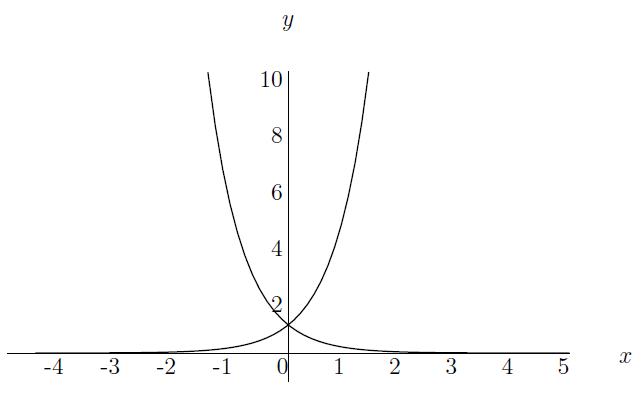Introduction: A function of the form $y(x)=a^x$, where $a$ ($a \neq 1)$ is a positive number, is called an exponential function with base $a$.
Remark 1: Let $a>1$.
For the graph of the function $y(x)=a^x$ the following holds:
the larger the base, the faster the graph approaches the $x$-axis in the negative $x$-direction, and the faster the graph increases in the positive $x$-direction.
The graph of the function $z(x)=(\dfrac{1}{a})^x$ is the mirrored version in the $y$-axis of the graph of the function $y(x)=a^x$.
Remark 2: An exponential function has no zeros.
Example: In the figure below $y(x)=5^x$ (the increasing graph) and $z(x)=(\frac{1}{5})^x$ (the decreasing graph) are shown.

Remark 1: Let $a>1$.
For the graph of the function $y(x)=a^x$ the following holds:
the larger the base, the faster the graph approaches the $x$-axis in the negative $x$-direction, and the faster the graph increases in the positive $x$-direction.
The graph of the function $z(x)=(\dfrac{1}{a})^x$ is the mirrored version in the $y$-axis of the graph of the function $y(x)=a^x$.
Remark 2: An exponential function has no zeros.
Example: In the figure below $y(x)=5^x$ (the increasing graph) and $z(x)=(\frac{1}{5})^x$ (the decreasing graph) are shown.


